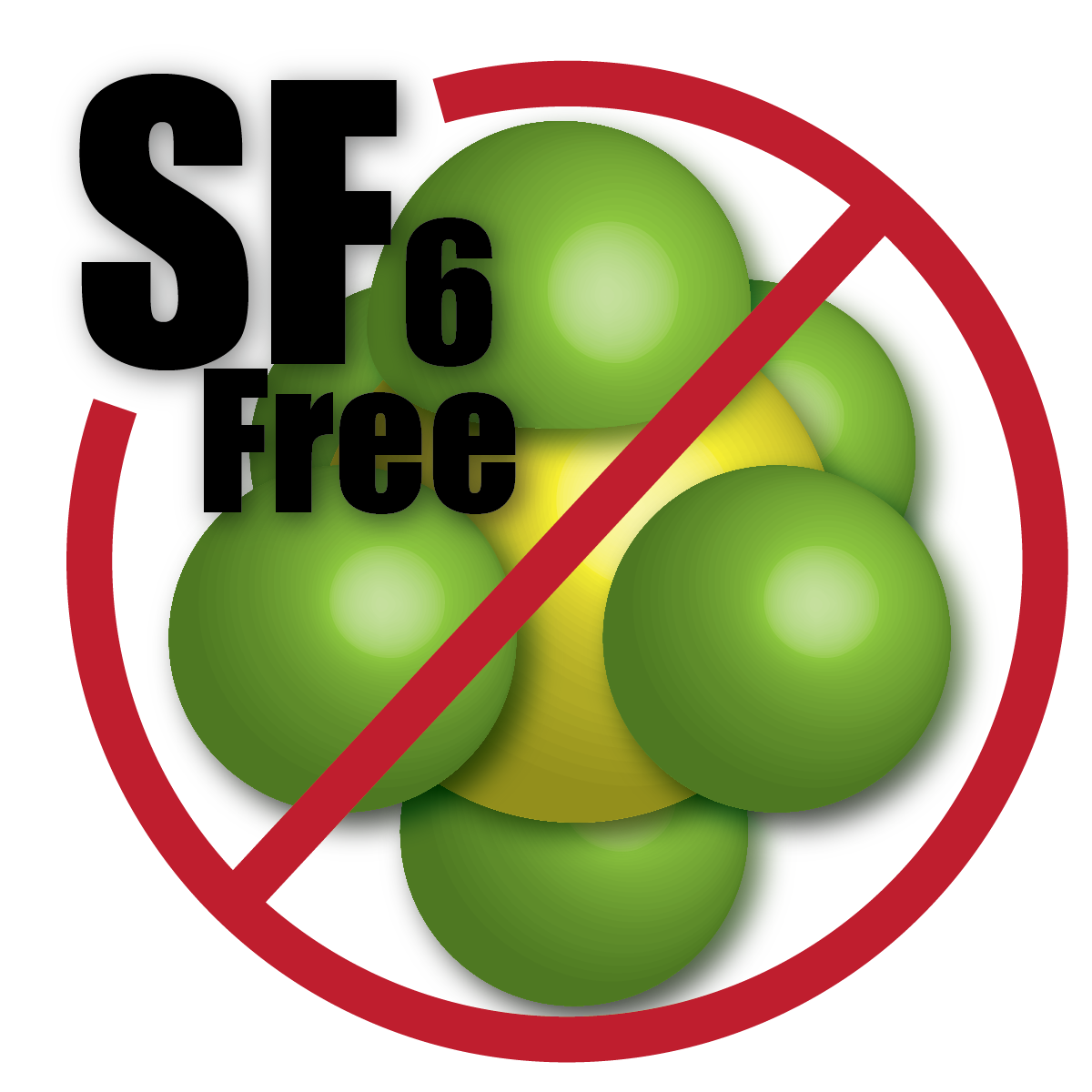
This Exploratory Topic would develop technologies aimed at reducing sulfur hexafluoride (SF6) emissions from the electric transmission and distribution sector. The targeted outcomes for this Exploratory Topic include analyzing the viability and risks associated with alternative gas solutions on the market today, identifying potential new alternative gases or gas mixtures with comparable performance to SF6 but with a much lower GWP (global warming potential), accelerating development and testing of vacuum-dry air or vacuum-solid dielectric technologies for high voltage (at or above 245 kV) applications, designing cost-effective sensors that enable early and continuous SF6 and alternative gas leak detection, and/or creating new pathways for the permanent fixation or destruction of SF6 for end-of-life disposal.
These technologies have a focus on market-wide adoption, particularly in the short-to medium-term, addressing the technical challenges associated with market acceptance of alternative technologies. ARPA-E anticipates that any technology developed in this program could have a significant and widespread global impact as countries look to reduce, regulate, or eliminate SF6 emissions from their electrical grids.
Program Director(s)
Dr. Isik Kizilyalli
Projects Selected Within This Exploratory Topic
UNIVERSITY OF CONNECTICUT
DETECTION AND FIXATION: A LIFECYCLE-MANAGEMENT FRAMEWORK TOWARDS AN SF6-FREE GREEN POWER NETWORK
The University of Connecticut proposes to develop a life-cycle management framework to accelerate and safeguard the transition of the U.S. power grid toward a sulfur hexafluoride (SF6)-free green power network. Although SF6 has several positive properties, it also has a global warming potential (GWP) 25,200 times that of CO2. Studies suggest the alternative environmentally friendly gas mixture g3TM as a promising potential replacement for SF6. The team will focus on leaks, aging byproduct detection, and fixations (capture and storage) for g3TM, but believes its proposed sensing technologies and life-cycle management can be implemented on all types of equipment. The technologies can be extended to retrofit existing assets for SF6 leak detection and end-of-life fixation.
GEORGIA INSTITUTE OF TECHNOLOGY
TESLA: TOUGH AND ECOLOGICAL SUPERCRITICAL LINE BREAKER FOR AC
Leakage from SF6-insulated circuit breakers and power equipment has been raising environmental concerns due to the high GWP of SF6. Georgia Institute of Technology proposes TESLA, an SF6-free high-voltage circuit breaker. Recent breakthroughs in the dielectric properties of supercritical fluid research show the promise of using it as a dielectric and arc-quenching medium for high-voltage AC circuit breakers instead of SF6. TESLA opens possibilities for an SF6-free electric apparatus. The team will design and build the proposed circuit breaker rated at 245 kV, 4 kA and validate the design and functionality using a synthetic test circuit.
GE GRID SOLUTIONS
DEVELOPMENT OF AN ECO-FRIENDLY OUTDOOR HVAC POWER CIRCUIT BREAKER TO REDUCE DEPENDENCE ON SF6 TECHNOLOGY IN THE U.S. ELECTRICAL GRID
GE Grid Solutions plans to develop a SF6-free high-voltage AC outdoor dead-tank power circuit breaker. The circuit breaker will be rated at 245 kV and will also provide the basis for a two-break 550 kV rated design. It will use g3TM gas mixture for current breaking and dielectric withstand. This project is a critical step in launching a range of products that meet U.S. energy industry requirements without using SF6 technology. These products are essential to reduce the bulk electric system’s carbon footprint and greenhouse gas emissions. The resulting products will be manufactured in the U.S.
TOSHIBA INTERNATIONAL CORPORATION
NOVEL APPROACHES TOWARD IMPROVED THERMAL INTERRUPTION PERFORMANCE OF CO2+02 NATURAL ORIGIN GAS MIXTURES FOR REPLACEMENT OF SF6 IN HIGH VOLTAGE EQUIPMENT
Using natural-origin gas mixtures of CO2 and O2 instead of SF6 gas in transmission and distribution circuit protection devices could reduce GWP from 25,200 to less than one. CO2-based gas mixtures have reduced thermal interruption performance compared with SF6. To achieve higher interruption ratings with CO2-based gas mixtures, Toshiba plans to (1) gather baseline thermal interruption data using an upgraded model circuit breaker with state-of-the-art architecture, (2) apply a novel interrupter architecture with external and persistent magnetic fields to improve arc cooling and reduce reliance on forced gas flow, and (3) design a novel contact system to minimize metal vapor production during arcing.
